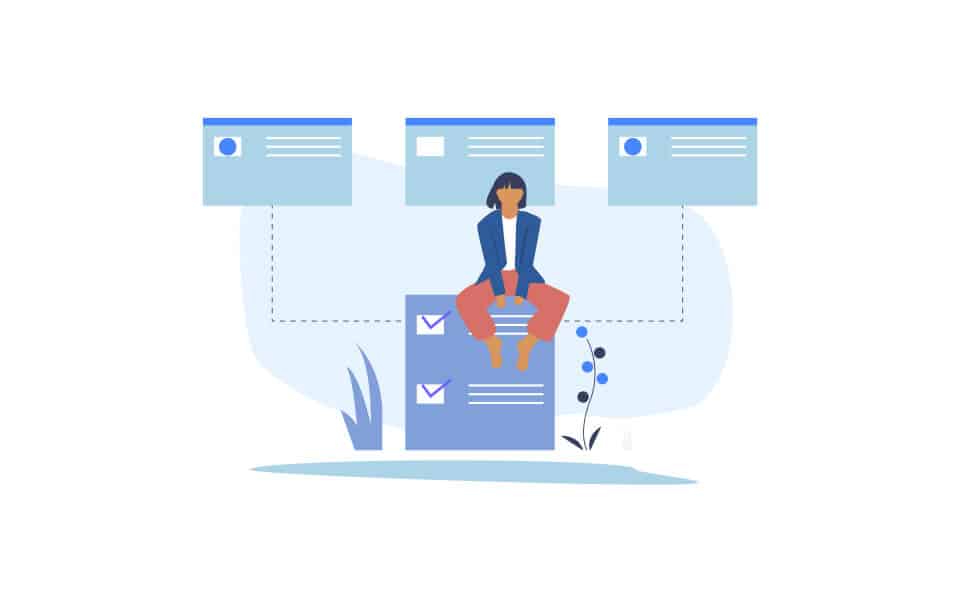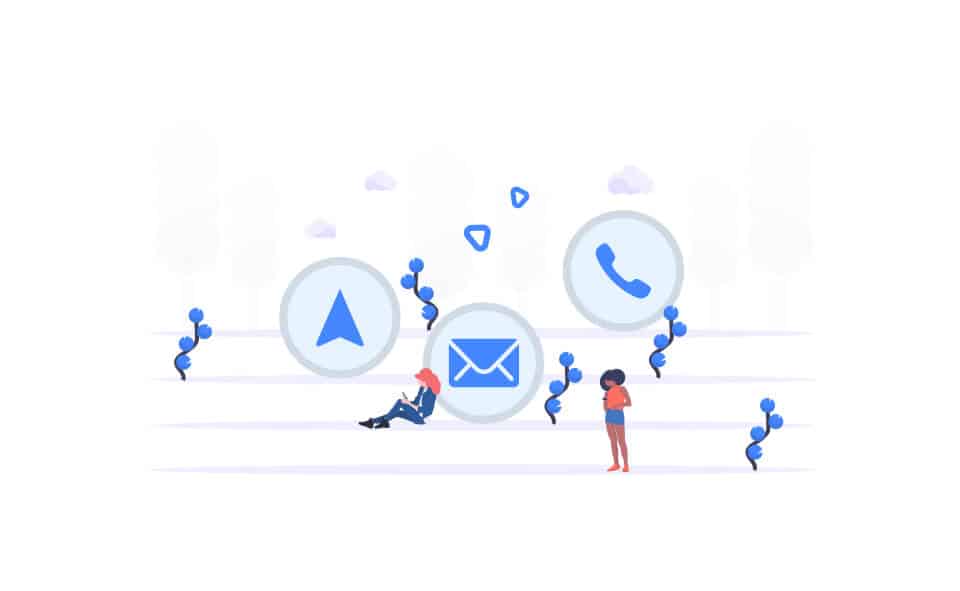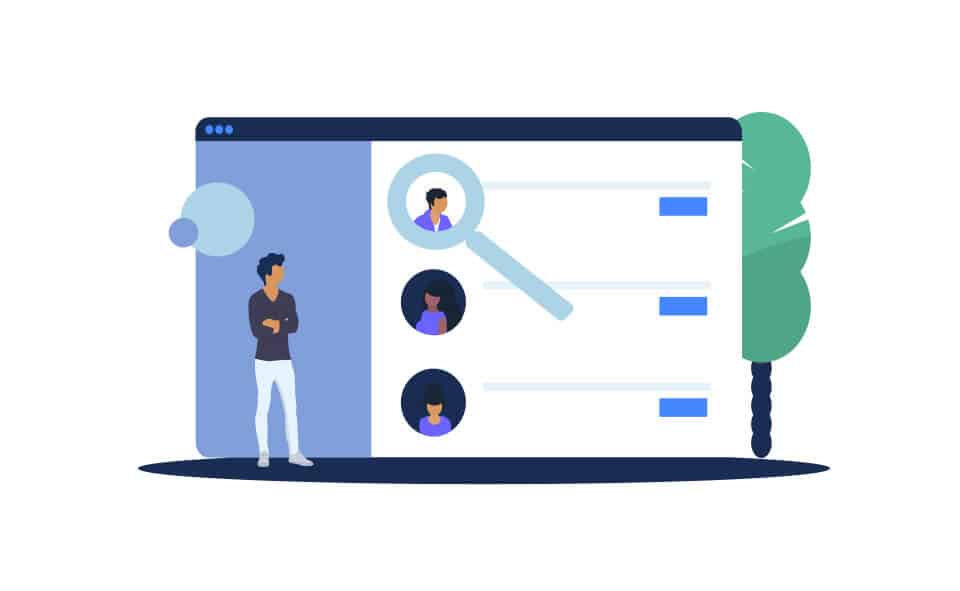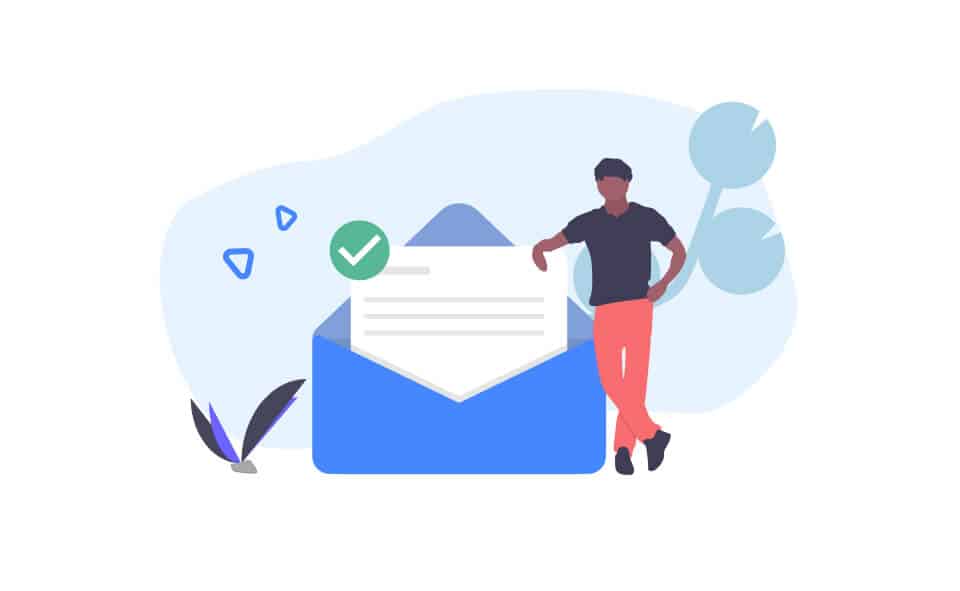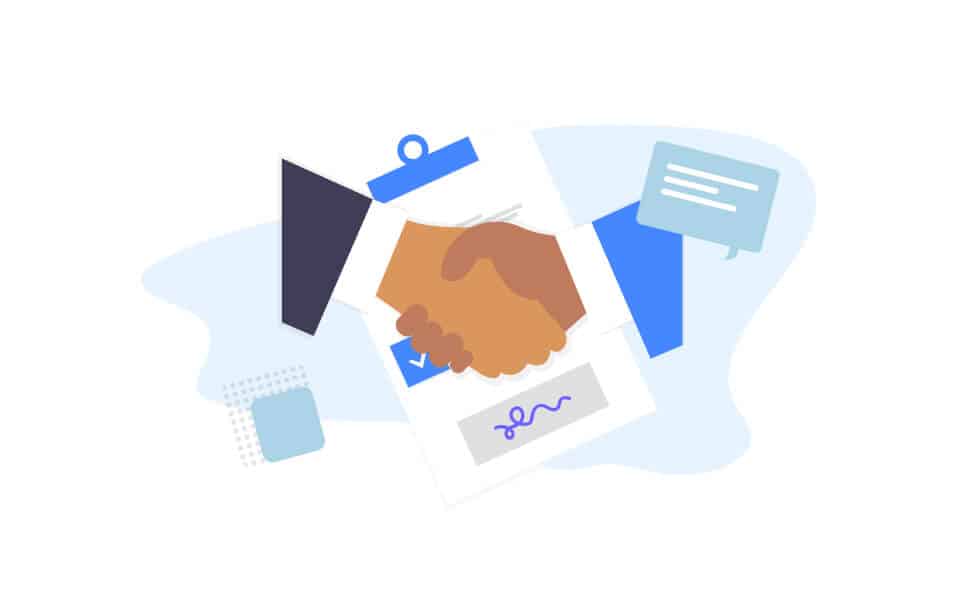Millennials: We’re all entitled and spoiled kids, living in our parent’s basement because we’re too lazy to get a job.
What. A. Load. Of. Rubbish.
Yet that’s what people believe. Even some millennials believe it, with 55% thinking that people over 30 have a better work ethic.
The fact is that, as of 2015, millennials make up the largest share of the US workforce. We’re workers, either for other companies or starting our own businesses.
Like every generation before us, we have positive traits, strengths that can contribute to our success. We also have negative traits though, and if we really want to get ahead, we have to take an honest look at what might be holding us back.
Sales are important in every business, and the goal of this guide is to help you as a millennial understand:
- The typical sales process…
- How technology can help…
- And how typical millennial traits can either help or hinder us
Before I go any further, a quick word on stereotypes – they can be dangerous, nasty things when not used correctly.
Many of the traits I refer to are based on sourced research. Some are based on observations. Either way, that doesn’t mean they apply to every single person born between 1980 and 2000.
There are some lazy millennials, just as there are some lazy gen x-ers and baby boomers. There will always be an exception. However, this generation has some unique characteristics, representative of the majority, that we can learn from. I don’t intend to insult anyone, millennial or otherwise.
Now that’s out the way, let’s see how you can make the most of sales automation.
What is Sales Automation anyway?
Sales automation allows people to spend more time on actually selling, rather than spending all of their time consuming tasks that surround it.
Selling anything, from sweets to SaaS, is more than just a single action. It’s a process and, while the details may vary, there are six steps that every good sales process will follow.
Sometimes an entire task can be automated, while in other cases automation can help streamline the process. Either way, automation means less time on boring tasks and more time on selling. Done correctly, it’s a win-win situation.
As the first true ‘digital native’ generation, this is where you shine. While everyone is having to change the methods they’ve been using for a lifetime, you’ve grown up with computers, the internet and apps. This is how we’ve always done things. Digital is practically in our blood.
Not only are we more likely to use technology in our day-to-day lives, we also tend to have a more positive view of technology.
Rather than being wary of technology, or worrying that it’s having a negative impact on our social lives, we tend to embrace all things digital. We see technology as something that can actually help bring us closer together. We view it as a way to be more efficient, more productive.
As a result, effective implementation of the automation process will come much easier to you than previous generations.
Let’s take a look at a typical sales process, and see how it can be improved.
Step 1: Prospecting
Before you can sell anything, you have to find prospects to sell to.
In the good ol’ days, this meant hours going through telephone books, making cold calls to anyone who owned a phone, or licking envelopes and sending direct mail to every post box in the country.
Then the internet came along and changed everything. Emails grew in popularity, and soon became the a cheap and effective alternative to cold calling and mail.
Information also became easier to access, allowing you to look up companies and industries specific to your niche.
How automation helps: However, it can still be a long drawn out process. While the information is there, often for free, it can still be a massive drain on your time to search for relevant prospects. That’s where you can start automating the sales process.
There are a number of services (such as Headreach) that will provide you with contacts specific to your industry, saving you hours of trawling through Google or LinkedIn. Or, if you already know who you want to contact but don’t have their details, services like our very own Name2Email will do the detective work for you
Pros and cons for millennials: Obviously, millennials benefit as digital-natives. Our openness to change means that we’re able to adopt new methods and digital solutions quickly. We’re used to using search engines to find out everything, and we can adapt to new software without too many challenges.
However, prospecting still needs to be targeted. There’s a saying in coding – garbage in, garbage out. If you want good results, even the best software will still need to be pointed in the right direction.
Like everyone else, millennials need to make sure they’re taking the time to specify their ideal prospects and refine their search parameters based on the results.
Step 2: Make the connection
A list of prospects is useless until you do something with it. It only becomes valuable when the salesperson uses that list and starts to contact the prospects. At some point, you need to say hello.
How automation helps: First impressions count. While the easiest method of connecting might be to blanket email all your potential leads, it’s certainly not the best. Personalization is essential to make a strong foundation for the process.
The good news? It’s possible to automate contacting your prospects without sacrificing personalization.
At the very least, your initial outreach should be personalized to the name and company of the prospect. However, that’s just the start. Smart email automation software will allow you to segment and personalize the email on a huge range of criteria, tailoring your message to the specific industry, job sector, location, turnover, and more.
Pros and cons for millennials: We’ve been using technology to talk to people all over the world since we could type. Millennials lead the pack when it comes to digital communication, being the generation most likely to regularly use email.
We’d also never dream of writing the words ‘Dear Sir/Madam’ in our lives, making digital connections much more authentic.
Sometimes though, emails and emojis aren’t the best way to connect with your prospect. If you’re happy using Snapchat and slang in your communication, email might not be the right choice.
Remember, it’s not about how you want to connect, it’s how your prospect wants to connect.
What suits them best? Sometimes, that means picking up the phone. I know, I hate phones too. But that’s still how a lot of prospects are doing business. Stay open.
Step 3: Researching and qualifying
Closely following on from the first connection, the research phase doesn’t stop once you’ve identified a prospect or made that first connection.
While you may have done plenty of research in advance, this is the stage where you find out more about them as a potential customer. You want to know whether the prospect is a viable lead. What are their needs and pain points? Does your product/service address those needs?
This is a two-way street – you judge whether the prospect is a good fit for you and give them the opportunity to see if you’re a good fit for them. A carefully planned qualifying phase makes it much more likely that both you and the prospect are going to benefit.
How automation helps: Research has never been easier. The chances are your prospect has already shared everything you could possibly want to know about them.
Automation software collates all that information for you and can deliver it where you need it most. Extensions such as Rapportive and Clearbit Connect collect all your contact information and displays it in your inbox.
Pros and cons for millennials: Every millennial I’ve ever met is already well versed in Google-fu. When you’re watching Netflix, while others wonder where they’ve seen that actor before you’ve already looked up his filmography, know how many awards he’s won, and what his next project is. Researching prospective clients works in the same way.
On the other hand, we shouldn’t limit ourselves to the data. Once we’ve started communication with the prospect, we need to make sure we’re actually listening to what they have to say. In a post on Inc.com covering the bad habits of millennials, Sean Kim (CEO at Rype) was quoted:
“As a Millennial, our primary goal should be to … learn as much as we can from other people. … Not only that, if you want to build rapport with anyone, you need to show you’re interested in what they have to say, and listening is an essential factor in developing rapport.”
It’s important to listen to your prospect, to really listen, and read between the lines of what they say. It will strengthen the relationship, increase the likelihood of making a sale, and you may even learn something.
Step 4: Show ‘em what you’ve got
Once you’ve realized that you’ll be a good fit for each other, it’s time to put your cards on the table. In days past this would mean an in-person meeting, complete with the most boring Powerpoint presentation known to man.
If you’re selling a physical product, especially an expensive one, it’s likely you’ll still have to meet with your prospect and give a demonstration. For digital products and services, it makes sense for the presentation and demonstration to take place online – this could be through a call, a webinar, or a free trial, depending on the product.
How automation helps: Whether you’re connecting online or offline, automation can help. It’s particularly useful for setting up convenient times for a meeting. If you’ve ever tried to set up a meeting, you know how much of a process this can be:
“How’s Wednesday look for you?”
“No, sorry, I’ve got a bazillion meetings that day, how about next Thursday?”
“Oh darn, I’ve got a vet’s appointment then. How about…”
This then goes on until you either, by some miracle, find a time that does suit you both, or (more likely) one of you finally cracks and shuts down their business, before moving to Alaska and swearing never to set up a meeting again as long as they live.
Yeah, it can get pretty dark.
Fortunately, apps like Calendly and Ahoy.ai allow you to quickly find a convenient time for all, without all the back and forth.
Pros and cons for millennials: Once you have set up that meeting, millennials benefit from their confident attitude. We’re the generation that’s used to putting ourselves out there, posting our thoughts to social media. That confidence will help in any presentation.
However, you’ll want to make sure that confidence doesn’t cross the line into arrogance, which can send prospects running. You’ll also want to be relatively open and trusting in your communication.
The Pew Research Center found that two-thirds of millennials say “you can’t be too careful” when dealing with people. While you wouldn’t want to give out your PIN and social security number, you’re trying to build a business relationship.
Like any relationship, that requires a certain level of mutual trust.
Step 5: Address concerns
After the first presentation, it’s possible your prospect will throw themselves at you, begging you to take their money.
Back in the real world, however, it’s much more likely they’re going to have some questions. They’re going to have some concerns.
Your next job as a salesperson is to address those concerns. Don’t dismiss them, or hope they’ll forget them as long as you talk loud and fast enough. Give the prospect every reason to say yes and address all their reasons to say no.
How automation can help: While it may seem impossible that you could automate addressing specific concerns of individual prospects, software can help you manage that connection. CRM (customer relationship management) software helps you manage those prospects and keep track of your communication.
For example, tools like Reply will intelligently analyze and sort your prospect’s communication for you. Heck, there’s even software like ToneAnalyzer that will pick up on emotional cues, language styles, and social tendencies.
Pros and cons for millennials: In an article about ‘conscious capitalism’ on Forbes, Jeff King pointed out how millennials are increasingly socially conscious, including in business.
Additionally, a Huffington Post article by Matthew Tyson pointed out how millennials value authenticity. This makes for a potent combination. Rather than relying on expensive ads to cover up product concerns, we are more likely to be authentic.
Again though, this step relies on mutual trust. The prospect has to trust you and you have to trust them.
Step 6: The Close
We’ve reached the last step. The finish line. It’s time to sign the contract, sit back and crack open the champagne. Job done.
Except it’s not really the last step.
While the sale may have been made, smart sellers will look to carry on building the relationship with the customer. Many companies employ ‘customer success’ managers, which is great. We have a customer success manager at Reply.
But for a business to build strong relationships with their customers, customer success needs to be part of the entire company’s culture, including the sales team. This isn’t a zero-sum game, where we try and win at our customer’s expense. Done right, the close of the first sale is the start of the second.
How automation can help: Again, having a good CRM is especially useful at this stage. As well as helping keep previous clients in mind, it will enable you to keep accurate and up-to-date information. Additional follow ups to see how the customer is getting on can be triggered and sent automatically, so you don’t have to rely on your memory.
Pros and cons for millennials: Authentic concern and compassion for your customer’s success will help you stand out among the rest. This does require a genuine focus on the customer’s requirements, rather than just your own. So, if you you struggle to relate to others, this will be difficult.
There’s no doubt about it – we’re a complex, multi-faceted generation. Our familiarity with modern technology is a huge advantage, which we can use to stand out and make a difference to the businesses we’re a part of. By using your strengths and working on your weaknesses, you can be confident that your sales automation process will bring in the results you deserve.
If you’re looking for sales automation software that ticks all the boxes, make sure to check out Reply. Learn more about how we can help you level up your whole sales process and sign up for a 14 day free trial today.


